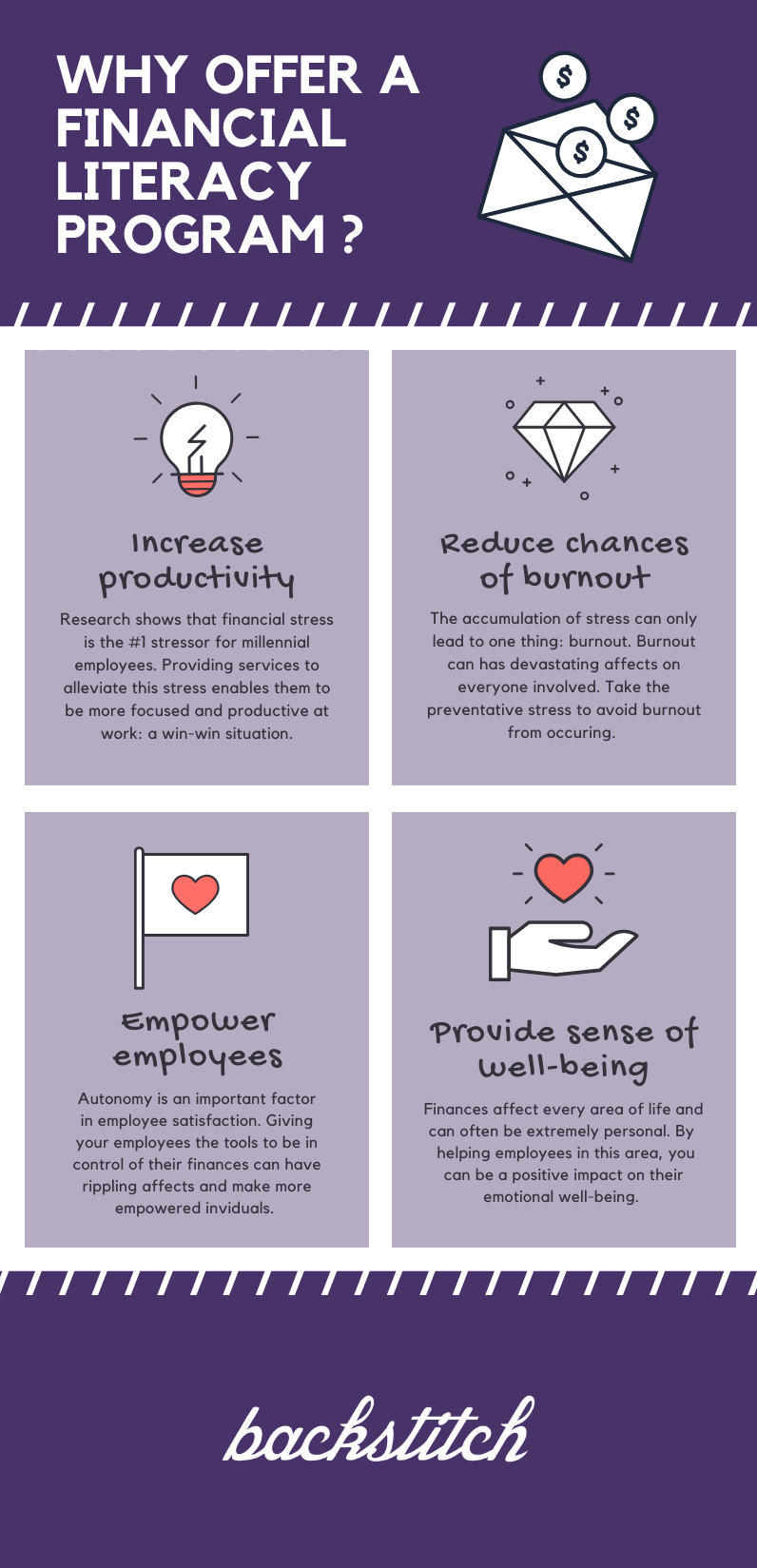Today, there is a wide variety of benefits that employers can offer their employees. In the past, health and wellness benefits were always the most desirable options available for employees. However, we are starting to see a shift in employee preferences. Specifically, financial literacy programs are overtaking the rest to become one of the most popular fringe benefits offered.
Financial literacy programs include things like financial advising, education reimbursement, and paid time off. Considering most companies report only 13 percent of their workforce to be financially literate, it is no wonder why employees are seeking help in this area. As an employer, it is a good idea to consider adding extensive financial literacy programs to your employees’ benefits packages. We’ve included 3 reasons why doing so may be valuable to your employees.
Younger Employees Struggle the Most
The demographic of the average workplace is getting younger, with millennials quickly becoming the primary generation in the workforce. Although their younger energy is extremely valuable, millennials are also the generation with the lowest rates of financial literacy. According to a study by PWC, about 35 percent of millennials are actively stressed about their finances, compared with 53 percent of the general workforce.
35% of millennials are actively stressed about their finances
These stats indicate the importance of including financial wellness programs within employee benefit packages, especially if your company has a large percentage of millennials. If employees are frequently concerned about finances, they will likely be stressed, distracted and less productive at work. By offering resources to help your workers become more financially literate, they will better control their finances, alleviating their financial stress. This will consequently allow them to become more productive -- making it a positive situation for employers and employees alike.
Financial Stress Causes Burnout
When financial stress is prevalent in an employee’s life, they are more likely to work longer hours or overtime if given the opportunity. While this might initially seem like a good thing, it often leads to burnout, which can be devastating for a company.
The effects of burnout often include job dissatisfaction, increased irritability at work, and the development of depression. Therefore, in order to help employees remain as physically and mentally healthy as possible, it is important that you show them how to be financially literate.
Employees Want Guidance
Finally, another reason companies should prioritize financial literacy programs is because employees want financial guidance. A Metlife study states that 57% of employees want to make their own financial decisions with someone to validate those decisions, and 31% want detailed financial guidance.
57% of employees want to make their own financial decisions with someone to validate those decisions
This proves that although employees want to feel in control of their own finances, most still want some outside affirmation that they are doing things right. Employers are in a great position to provide services that provide this sort of “affirmation” within their financial literacy packages.
Some ways that employers can do this include offering a third-party financial counseling service or allowing time at work for employees to figure out their budgets, plans, and more. Other ideas that employers could implement include inviting financial experts to come speak, hosting workshops, webinars, and more. Considering most employees don’t even need full-on guidance, employers could also save by offering annual or one-time guidance services.
It is clear why financial literacy is quickly becoming the top employee benefit for employers to offer. If it’s not already, consider adding it to your company’s benefits package. If you want to learn about other great benefits to offer employees or how to get them to take advantage of their current benefits, then contact us today.
Want to discover more about how to communicate employee benefits?

